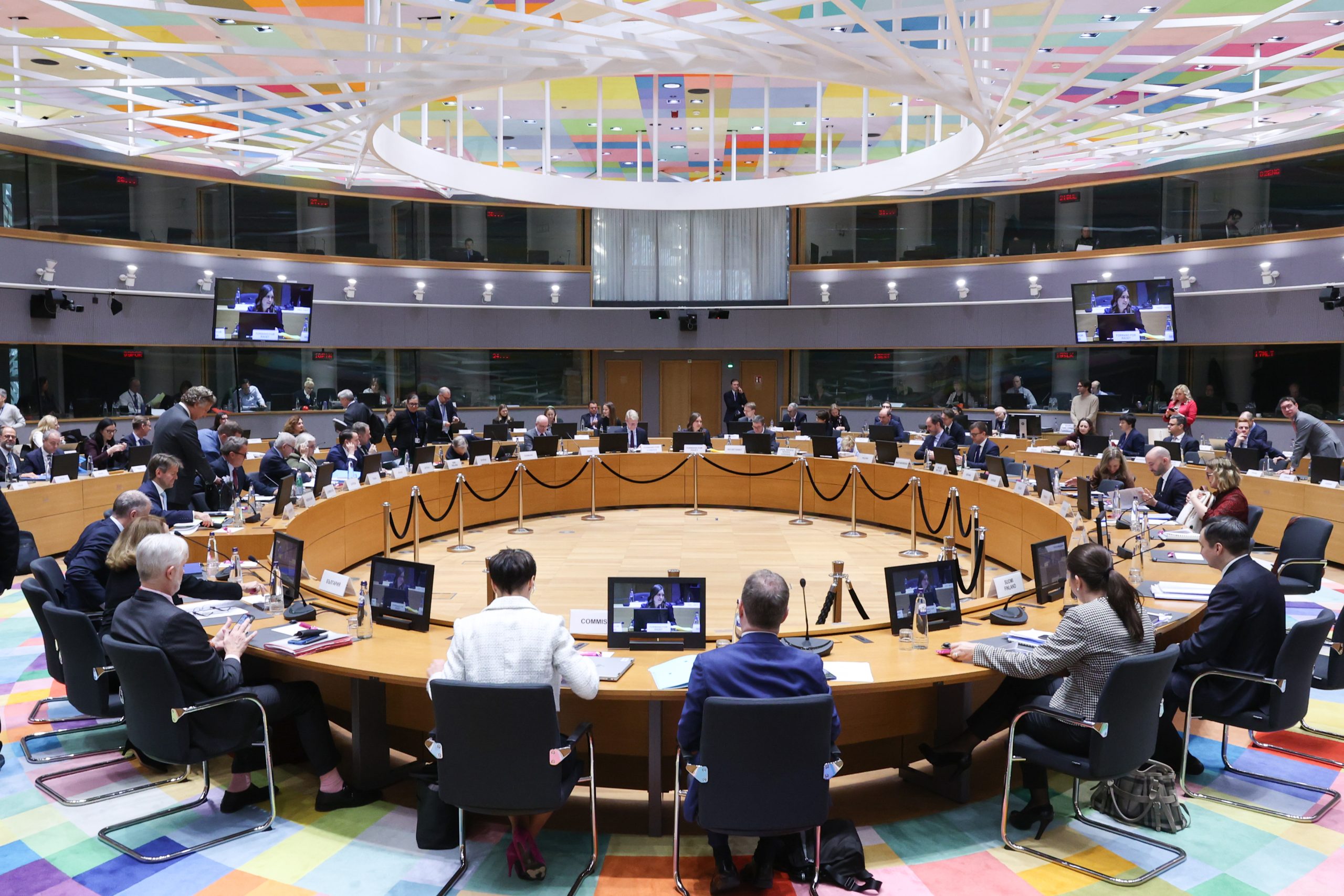Ensuring the independence of the Regulatory Body for Electronic Media (REM), financing public services primarily through fees pay by citizens, along with reducing the share of commercial financing and increasing transparency of the state’s influence in the media market are just some of the points of Serbia’s new Public Information System Strategy (the so-called Media Strategy), which should contribute to the overall reduction of political influence on the media market.
While some see the Strategy as “a good basis for further improvement of the media-related legal framework”, others fear that the offered solutions come down to nothing more than a “Trojan Horse for the Serbian media”.
It took four years for stakeholders in Serbia to create and adopt the new Media Strategy. After several rounds of consultation among institutions, media organizations, and the civil sector, the Strategy was adopted on 30 January 2020.
OSCE Representative on Freedom of the Media Harlem Désir and Head of OSCE Mission to Serbia Andrea Orizio assessed that the adoption of the Strategy was “a major step towards a healthier media environment [in Serbia] based on media freedom, ethics, professionalism, and literacy”. The and representatives of the Association of Journalists of Serbia (UNS) and the Independent Journalists’ Association of Serbia (NUNS) also said they were satisfied with the Strategy, which is to serve as a basis for a legislative change in the coming period.
However, for the former Chair of the Independent Association of Journalists of Serbia Vukašin Obradović, who left the Working Group for drafting the Media Strategy because of his disagreement with the consultative process that preceded its adoption, the current situation is far from ideal, while “the solutions proposed in the Strategy were sneakily offered to the media associations, just like a Trojan Horse”.
“I don’t think there is a real desire to change the media system with this government,” Obradović told European Western Balkans.
The Thirteen Requests
Over the last few years, media associations have been persistently pointing to increased threats to the safety of journalists, violations of the law, political pressures on the media and journalists, misuse of media, violations of journalistic and ethical norms, and narrowing of space for media pluralism in Serbia.
Foreign associations such as Freedom House are also seeing a sharpening media climate in the country. Last year, the Freedom House report downgraded Serbia to a “partially free country” for the first time.
In May 2018, a Media Strategy Working Group was formed after “three rounds of strenuous negotiations”, journalist and media associations, monitored by international stakeholders such as OSCE, reached an agreement with the Government of Serbia about the beginning of the development of the Media Strategy.
Serbia’s Media Strategy – step towards media freedom or simulation of reforms?
The Media Freedom Group, comprised of several Serbian media and journalism associations, submitted a list of the so-called Thirteen Requests for improvement of the media and media freedom situation to the Government Coordinating Body for Cooperation with the Media in August of the same year. By the end of 2018, the Group proposed a Draft Strategy, offering solutions to some of the spotted problems. The Group also warned of the deterioration of media freedom in Serbia.
It was then that the Group requested the initiation of the process of dismissal of members of the REM Council, to clarify cases of attacks against journalists, and demanded from the authorities to cease the practice of discrediting journalists and shut down the state-owned news agency Tanjug.
“The basic agreement reached the outset, which implied that media associations, in parallel with our participation in the Working Group, followed the negotiations of government representatives and journalists’ associations on 13 specific requests”, explained Obradović. “It was a condition under which I accepted to participate in the work of the Media Strategy at all, because I felt that, regardless of the fact that the Strategy was an important and necessary document, there were issues that we would have to address in order to improve the overall situation in the country”.
Obradović believes that the Government of Serbia did not solve the urgent problems of the media scene, which is why he believes that the adopted Media Strategy represents Potemkin village.
“I did not want to give an alibi to this government or the ruling regime that we are in – what [Serbian Prime Minister] Ana Brnabić likes to say – inclusive process, and as if we were bringing in documents that would significantly change the media scene. I think that the adoption of the Strategy is just one maneuver and a process that serves the Government of Serbia for marketing purposes”, Obradović told EWB.
The former Chair of NUNS points out that the key question is whether we can trust that the new Media Strategy, to which he says there are not too many objections, will serve other purposes than the ruling party’s propaganda.
“I am deeply convinced that the Serbian Progressive Party (SNS) as the most influential party, simply does not have free media and the public interest in its political, ideological and programmatic habitus – this is not a matter of fact – and I think media control is an integral part of their political activity and vision of Serbia. In such circumstances, I simply found it unnecessary to participate in the creation of a single document”, concludes Obradović.
Caught in the net of state ownership
The Strategy has also set a goal to untangle the net of state-owned media. This applies to ownership over two national dailies, Politika and Večernje Novosti, as well as over Tanjug News Agency. Specifically, the new Strategy envisages the state bodies to retreat from media ownership completely. However, the deadlines for this have not been defined in the Strategy.
The adopted document states that the government will “promptly” file a registration application to remove Tanjug, which has been operating in undisclosed status for years, from the register of companies, which should further lead to the privatization of Tanjug. Namely, since October 2015, the agency had two unsuccessful attempts at privatization, after which the Government of Serbia shut down Tanjug on paper, while the news agency continued to operate. According to to the achieves of the Serbia Business Registers Agency, Tanjug is still listed as a state-owned enterprise.
While encouraging that the new Strategy commits the state to abandon its ownership of the media, experts remind that when this happens, the state influence will remain though the state-owned cable operator Telekom, as well as though the cable channels Telekom owns.
In terms of transparency, the Strategy envisages the establishment of a platform on which information on funded projects, reports on violations of media freedoms and decisions of competent authorities in this regard would be presented. The security and economic position of journalists should be improved by amending the criminal law, which would impose stricter penalties for attacks on journalists, as well as collective agreements, which should ensure more stable employment.
The development of an Action Plan based on this Strategy, covering the period from 2020 to 2025, is yet to come. According to the Serbian Prime Minister Ana Brnabić, the deadline for the adoption of the Action Plan is May 16.

